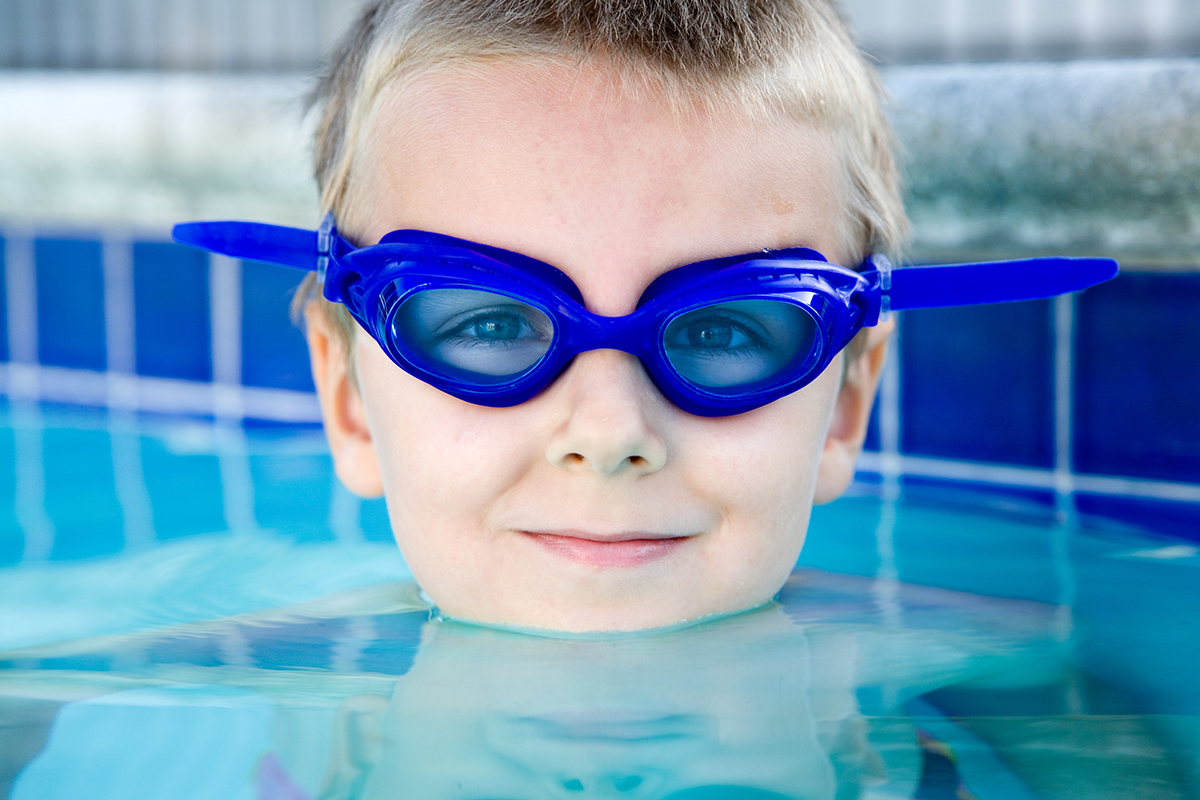Ouch! Your little one’s ear is aching and tender to the touch, and they have been swimming all weekend-long. Is this a typical ear infection or could it be swimmer’s ear?
Affecting the outer ear, swimmer’s ear (also called acute otitis externa) is a painful condition resulting from inflammation, irritation or infection, and is different than a regular ear infection, which is an infection of the middle ear.
Swimmer’s ear happens when bacteria grow in the ear canal. Most of the time, water can run in and out of the ear canal without causing a problem. But, sometimes, water gets trapped in the ear canal, allowing bacteria to grow. A lot of swimming can lead to these wet conditions in the ear canal and that’s why this condition commonly affects swimmers. Children and teenagers are often prone to swimmer’s ear and sometimes they can get an infection in the ear canal even if they haven’t been swimming. A scratch or other irritation to the canal can also cause swimmer’s ear.
What are the signs and symptoms of swimmer’s ear?
Swimmer’s ear may begin with itching inside the ear and pain that gets worse when you tug on the outer ear. Other signs and symptoms may include:
- A sensation that the ear is blocked or full
- Drainage
- Fever
- Decreased hearing
- Intense pain that may spread to the neck, face, or side of the head
- Swollen lymph nodes around the ear or in the upper neck
- Redness and swelling of the skin around the ear
How do you treat swimmer’s ear?
The goal of treating swimmer’s ear is to stop the infection and allow the ear canal to heal. For most cases of swimmer’s ear, your doctor will carefully clean the outer ear canal to remove any discharge, earwax, flaky skin and other debris, and prescribe eardrops that contain an antibiotic to kill the bacteria. It is important to use the drops as long as your doctor tells you to, even if your ear starts feeling better. If you stop too soon it can cause the infection to come back.In cases of swimmer’s ear where the ear canal is completely swollen shut, a sponge or wick may be placed in the canal so the antibiotic drops will enter the canal more effectively. Over-the-counter pain medication may also be prescribed. If your infection is more advanced or doesn’t respond to treatment with eardrops, your doctor may prescribe oral antibiotics.
What are the precautions you can take to prevent swimmer’s ears?
The key to preventing swimmer’s ear is to keep your ears as dry as possible and by following these tips:
- Use a bathing cap, ear plugs, or custom-fitted swim molds when swimming
- Dry your ears thoroughly after swimming or showering by:
- Using a towel to dry your ears well
- Pulling your earlobe in different directions while your ear is faced down to help water drain out
- If you still have water left in your ears, use a hair dryer, on the lowest heat to dry your ears
- Have your ears cleaned periodically by an otolaryngologist if you have itchy, flaky or scaly ears, or extensive earwax
- Don’t remove ear wax as it helps protect your ear canal from infection
- Don’tput objects in your ear canal, including cotton swabs, pencils, paperclips, or fingers
- Ask your health care provider about using ear drops after swimming
When can I swim again?
With proper treatment, most infections go away within seven to ten days and then your summertime trips to the pool, lake, or ocean can resume.
*Source: American Academy of Otolaryngology – Head and Neck Surgery, www.entnet.org
*Source: Mayo Clinic, www.mayoclinic.org
*Source: Centers for Disease Control and Prevention, www.cdc.gov
To find a doctor or schedule an appointment, visit Steward Doctorder™.




